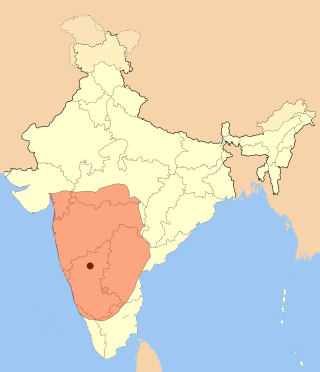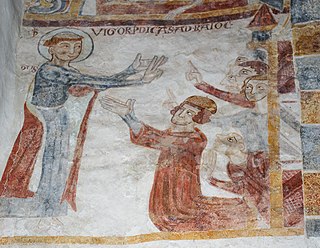The 510s decade ran from January 1, 510, to December 31, 519.
The 520s decade ran from January 1, 520, to December 31, 529.
The 560s decade ran from January 1, 560, to December 31, 569.
The 490s decade ran from January 1, 490, to December 31, 499.
The 480s decade ran from January 1, 480, to December 31, 489.

Year 543 (DXLIII) was a common year starting on Thursday of the Julian calendar, the 543rd year of the Common Era (CE) and Anno Domini (AD) designations, the 543rd year of the 1st millennium, the 43rd year of the 6th century, and the 4th year of the 540s decade. As of the start of 543, the Gregorian calendar was 2 days ahead of the Julian calendar, which was the dominant calendar of the time.

Year 751 (DCCLI) was a common year starting on Friday of the Julian calendar. The denomination 751 for this year has been used since the early medieval period, when the Anno Domini calendar era became the prevalent method in Europe for naming years.

Year 797 (DCCXCVII) was a common year starting on Sunday of the Julian calendar. The denomination 797 for this year has been used since the early medieval period, when the Anno Domini calendar era became the prevalent method in Europe for naming years.

Year 450 (CDL) was a common year starting on Sunday of the Julian calendar, the 450th Year of the Common Era (CE) and Anno Domini (AD designations, the 450th year of the 1st millennium, the 50th year of the half of 5th century, and the 1st year of the 450s decade. At the time, it was known as the Year of the Consulship of Valentinianus and Avienus. The denomination 450 for this year has been used since the early medieval period, when the Anno Domini calendar era became the prevalent method in Europe for naming years.
The 460s decade ran from January 1, 460, to December 31, 469.
Year 525 (DXXV) was a common year starting on Wednesday of the Julian calendar. At the time, it was known as the Year of the Consulship of Probus and Philoxenus. The denomination 525 for this year has been used since the early medieval period, when the Anno Domini calendar era became the prevalent method in Europe for naming years. In this year, the monk Dionysius Exiguus proposed a calendar starting with the birth of Jesus, so this was the first time the year was designated AD. However, the system was not used in general until the reign of Charlemagne in the 9th century.

Year 534 (DXXXIV) was a common year starting on Sunday of the Julian calendar. At the time, it was known as the Year of the Consulship of Iustinianus and Paulinus. The denomination 534 for this year has been used since the early medieval period, when the Anno Domini calendar era became the prevalent method in Europe for naming years.

Year 491 (CDXCI) was a common year starting on Tuesday of the Julian calendar. At the time, it was known as the Year of the Consulship of Olybrius without colleague. The denomination 491 for this year has been used since the early medieval period, when the Anno Domini calendar era became the prevalent method in Europe for naming years.

Year 512 (DXII) was a leap year starting on Sunday of the Julian calendar. In the Roman Empire, it was known as the Year of the Consulship of Paulus and Moschianus. The denomination 512 for this year has been used since the early medieval period, when the Anno Domini calendar era became the prevalent method in Europe for naming years.

Year 513 (DXIII) was a common year starting on Tuesday of the Julian calendar. At the time, it was known as the Year of the Consulship of Probus and Clementinus. The denomination 513 for this year has been used since the early medieval period, when the Anno Domini calendar era became the prevalent method in Europe for naming years.

Year 515 (DXV) was a common year starting on Thursday of the Julian calendar. At the time, it was known as the Year of the Consulship of Florentius and Anthemius. The denomination 515 for this year has been used since the early medieval period, when the Anno Domini calendar era became the prevalent method in Europe for naming years.

Year 517 (DXVII) was a common year starting on Sunday of the Julian calendar. At the time, it was known as the Year of the Consulship of Agapitus and Paulus. The denomination 517 for this year has been used since the early medieval period, when the Anno Domini calendar era became the prevalent method in Europe for naming years.

Year 565 (DLXV) was a common year starting on Thursday of the Julian calendar. The denomination 565 for this year has been used since the early medieval period, when the Anno Domini calendar era became the prevalent method in Europe for naming years.

Year 663 (DCLXIII) was a common year starting on Sunday of the Julian calendar. The denomination 663 for this year has been used since the early medieval period, when the Anno Domini calendar era became the prevalent method in Europe for naming years.
Vitalian was a general of the Eastern Roman Empire. A native of Moesia in the northern Balkans, and probably of mixed Roman and Gothic or Scythian barbarian descent, he followed his father into the imperial army, and by 513 had become a senior commander in Thrace.












